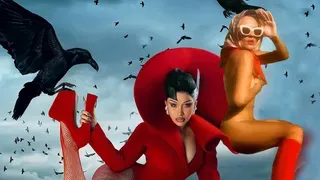February 9, 2017
Raise Your Glass to Kentucky Bourbon's Rising Economic Kick
Bruce Schreiner READ TIME: 3 MIN.
Bourbon's economic potency is getting stronger with age, increasing its impact on Kentucky by $1 billion in the past two years as global demand for American whiskeys continues to grow.
Other whiskeys are sharing in the good times, too. And pricier spirits are in strong demand. Two reports released Tuesday - one in Kentucky, the other in New York - showcased continued growth for whiskey makers.
Combined U.S. revenues for bourbon, Tennessee whiskey and rye whiskey shot up 7.7 percent to $3.1 billion in 2016, the Distilled Spirits Council said in the report released in New York. Domestic volumes rose 6.8 percent last year to 21.8 million cases.
"U.S. sales of all American whiskeys are blazing hot, said Frank Coleman, a spokesman for the distilled spirits trade group. "The more expensive products are actually flying off the shelves the fastest."
Bourbon, Tennessee whiskey and rye whiskey revenues and volumes continued to outpace the overall distilled spirits industry, the council said in its annual report. Rye whiskey is a small portion of those overall figures, but its volumes surged 17 percent last year.
U.S. volumes for the category's super-premium products rose 11.8 percent last year, while revenues were up 13.5 percent, the council said.
At the other end of the price spectrum, volumes were up 11.4 percent in the value category and revenues increased 13.1 percent.
The industry has cashed in on the growing popularity of cocktails.
"Spirits makers continue to develop new innovations to appeal to a growing audience of adult millennials, and they are responding," said Distilled Spirits Council President and CEO Kraig R. Naasz.
Export volumes for bourbon, Tennessee whiskey and rye whiskey products surged by 10.2 percent last year despite challenges posed by a strong dollar, which makes U.S. goods more expensive in foreign markets.
But export revenues for the trio of products fell just short of $1 billion for the first time in recent years, as overseas consumers increasingly chose less expensive whiskeys from the U.S., the council said.
In Kentucky, meanwhile, state officials celebrated bourbon's increasing economic clout.
Distilling contributes $8.5 billion annually to the state's economy, up $3 billion since 2008 and a $1 billion increase in two years, according to a report by the University of Louisville's Urban Studies Institute.
Kentucky is home to about 95 percent of the world's bourbon production, with such brands as Jim Beam, Evan Williams, Wild Turkey, Maker's Mark, Woodford Reserve and Four Roses.
"Kentucky bourbon isn't just a drink, it's the new fuel for the state's economy," said Kentucky Distillers' Association President Eric Gregory.
Up to 17,500 people in Kentucky owe their paychecks to the spirits industry, an increase of 2,000 jobs since 2014, the report said.
Total payroll now tops $800 million, compared to $707 million in 2014. The average salary for distillery workers is $95,089.
The bourbon industry is betting on continued strong demand.
Some 6.7 million barrels of bourbon are maturing in Kentucky, the highest inventory since 1974, the report said. The number of Kentucky distilleries has grown to 52, the most since Prohibition ended, and the industry is in the midst of a $1.2 billion building boom.
"There really doesn't seem to be any immediate end in sight," Kentucky Gov. Matt Bevin said.
In recent years, state lawmakers looked to fuel more growth in bourbon production and tourism. They gave tax relief with an income tax credit for property taxes paid on aging barrels of bourbon. Distilleries have to invest the tax credit back in their operations. Lawmakers also allowed distillery visitors to sip cocktails and purchase more whiskey during tours.
Bevin and top legislators promised Tuesday to look for more ways to assist the spirits industry, and they pointed to one looming issue - a potential overhaul of the state's tax code - as one way to give a boost.






